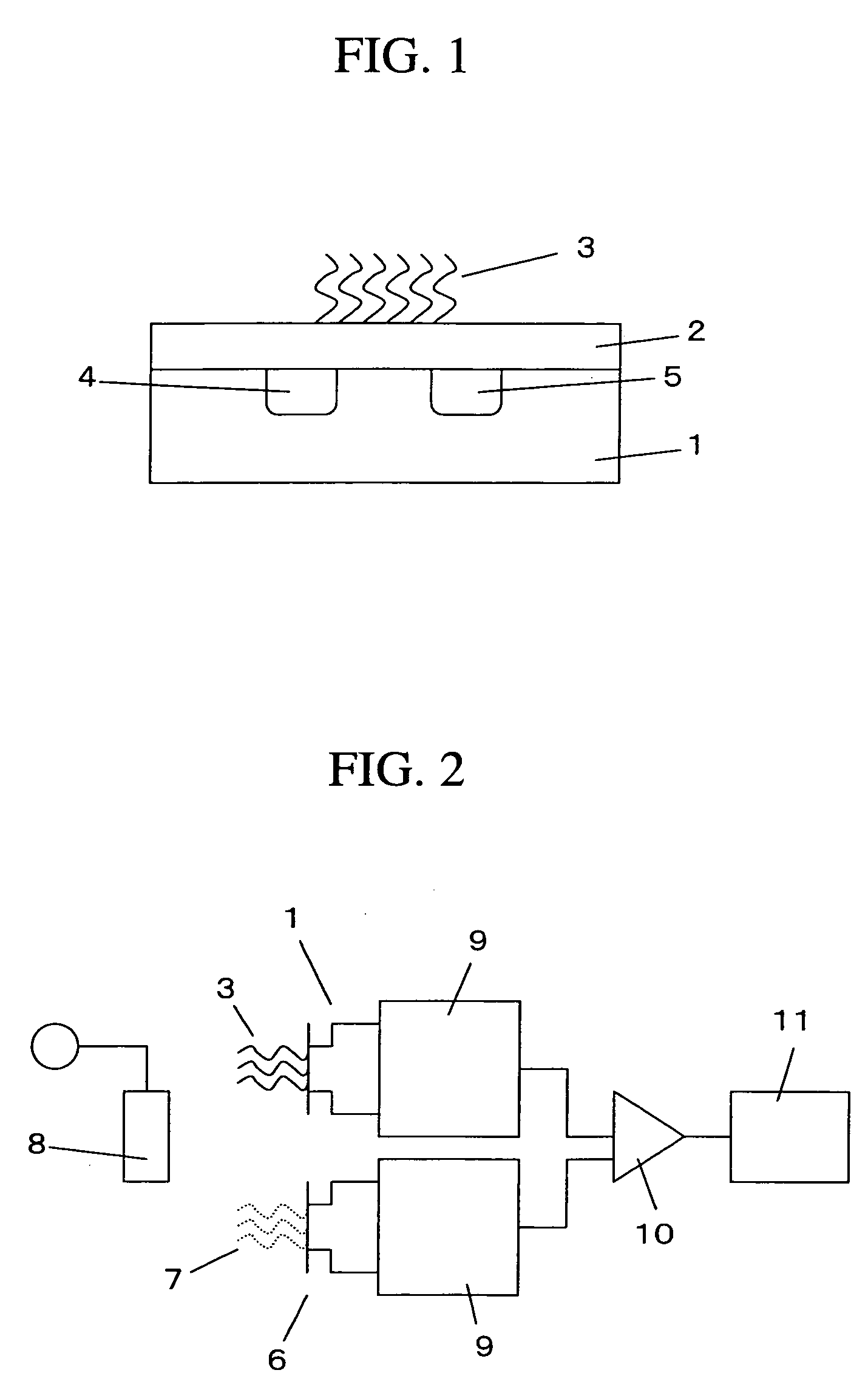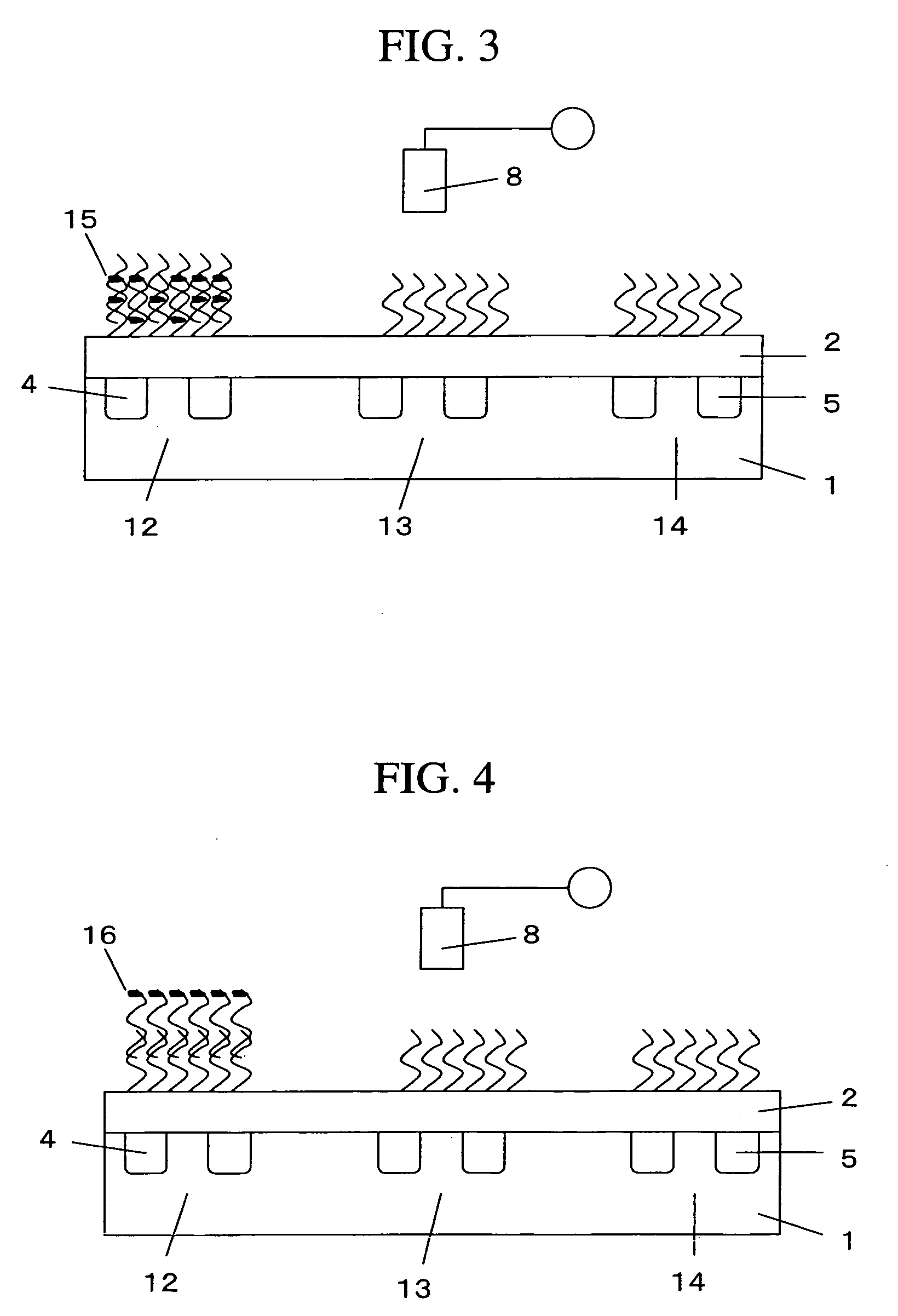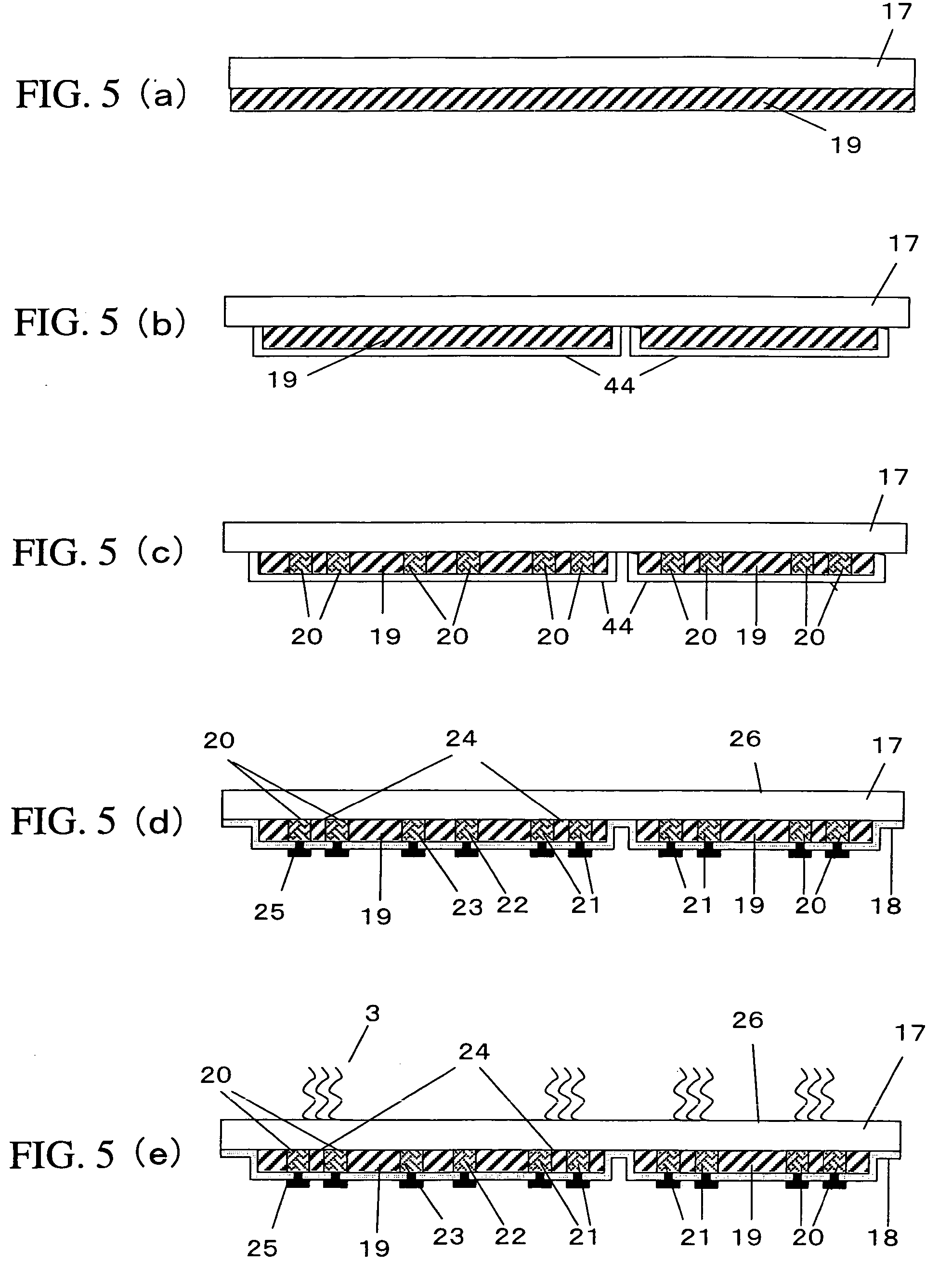Potentiometric dna microarray, process for producing the same and method of analyzing nucleic acid
- Summary
- Abstract
- Description
- Claims
- Application Information
AI Technical Summary
Benefits of technology
Problems solved by technology
Method used
Image
Examples
example 1
[0035]FIG. 1 is a cross sectional schematic drawing to explain an example of an electric field effect transistor (FET) for gene detection according to the present invention.
[0036] It is configured such that a nucleic acid probe 3 is immobilized on the surface of a gate insulator 2 of an insulated gate FET 1. For the nucleic acid probe is used an oligonucleotide, cDNA, or DNA fragment branched in the middle, each generally composed of 300 nucleotides or less and capable of hybridizing with a target gene to be measured under appropriate conditions. In the case of an oligonucleotide, it is preferably a nucleic acid fragment with a length of 80 bases or less. For the gate insulator, a material such as silicon dioxide (SiO2), silicon nitride (SiN), aluminum oxide (Al2O3), or tantalum oxide (Ta2O5) is used alone or in combination, and generally a bilayer structure in which silicon nitride (SiN), aluminum oxide (Al2O3), and tantalum oxide (Ta2O5) are layered on top of silicon dioxide (SiO...
example 2
[0040]FIG. 2 is a construction example to show a genetic testing system with the field effect transistor for detection of gene (Genetic FET) shown in FIG. 1.
[0041] This genetic testing system is provided with a reference FET 6 in addition to the Genetic FET 1 shown in FIG. 1, and a differential measurement between the Genetic FET and the reference FET is carried out. The nucleic acid probe 3 having the base sequence complementary to the target gene in a sample is immobilized on the surface of the gate insulator of the Genetic FET 1. On the other hand, a nucleic acid probe 7 having a base sequence that is different from the base sequence complementary to the target gene is immobilized on the surface of the gate insulator of the reference FET 6.
[0042] Such a differential measurement allows to accurately detect only the output change caused by the hybridization of the target gene and the nucleic acid probe by compensating for an output change occurring from changes in ambient tempera...
example 3
[0044]FIG. 3 is an explanatory drawing of a measurement system of the DNA microarray of the present invention in combination with an intercalator. In the illustrated example of the DNA microarray, three Genetic FETs 12 to 14 are integrated. The first FET 12 is used as a Genetic FET to detect a first target gene, the second FET 13 is used as a Genetic FET to detect a second target gene, and the third FET 14 is used as the reference FET. Nucleic acid probes having base sequences complementary to the first and second genes are immobilized on the gate insulators of the first and second FETs, respectively. A nucleic acid probe having a base sequence that is different from the base sequences complementary to the first and second genes is immobilized on the surface of the gate insulator of the reference FET.
[0045]FIG. 3 depicts a state in which a sample solution containing only the first gene is introduced to the integrated DNA microarray and hybridized with the target gene, followed by t...
PUM
| Property | Measurement | Unit |
|---|---|---|
| Density | aaaaa | aaaaa |
Abstract
Description
Claims
Application Information
 Login to View More
Login to View More - R&D
- Intellectual Property
- Life Sciences
- Materials
- Tech Scout
- Unparalleled Data Quality
- Higher Quality Content
- 60% Fewer Hallucinations
Browse by: Latest US Patents, China's latest patents, Technical Efficacy Thesaurus, Application Domain, Technology Topic, Popular Technical Reports.
© 2025 PatSnap. All rights reserved.Legal|Privacy policy|Modern Slavery Act Transparency Statement|Sitemap|About US| Contact US: help@patsnap.com



